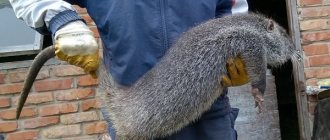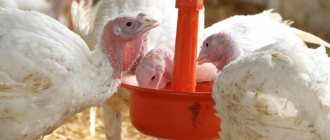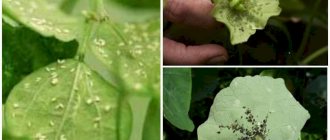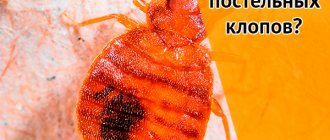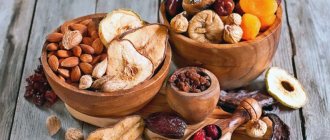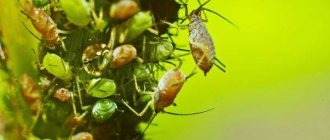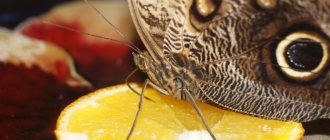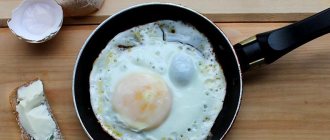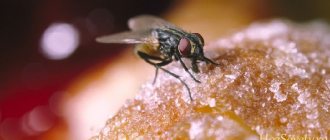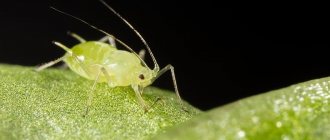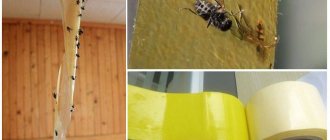Choosing a knife for slaughtering pigs is not an easy task, requiring careful study of its characteristics. An unaccounted for defect can cause an unsuccessful operation. There have been cases where the blades remained in the carcass, causing terrible pain to the animals. In such a situation, adrenaline was produced in the body, the pigs broke free from their leash and ran around until they dropped dead from loss of blood. You will learn how to choose a good tool and avoid “bloody horror” by reading the article.
Why is it so important to choose the right pig cutter?
There have been cases where a knife stuck in a pig carcass jumped out straight at the slaughterer due to heartbeats. You can also often hear stories about how a broken blade caused extreme pain to an animal. It gave him a rush of adrenaline and made him rush all over the yard.
As a result, a large amount of blood was lost, and the meat lost its aesthetic and taste qualities.
To prevent such situations from arising, due attention should be paid to the preparation and selection of tools for slaughter. It is this problem that we will highlight from all sides in this article.
Carcass cutting
After external processing of the carcass, slaughterers begin cutting it up. This is a very important stage of work, during which it is important not to damage the animal’s urinary and gall bladders. It is also necessary to properly separate the meat from the lard.
Cutting is carried out on a convenient platform and is usually carried out according to a standard plan:
- First of all, the head is cut off.
- Then an “apron” is carefully cut out on the animal’s peritoneum.
- Then, using an ax, the sternum is chopped or cut down the center.
- Next, to prevent the contents of the digestive tract from getting onto the meat, the esophagus is removed from the carcass. To do this, its end is tightly tied and cut off above the dressing.
- After this, the lungs, heart and diaphragm are removed.
- Then the stomach and intestines are taken out.
- The liver is cut off. This must be done carefully so as not to damage the gallbladder while it is inside the carcass.
- Then the internal fat is removed.
- Then comes the turn of the kidneys - they should be removed carefully to prevent damage to the bladder, which will also need to be carefully cut out later.
- After all the internal organs of the pig have been removed, the dressed carcass is wiped with dry, clean rags. It is not recommended to rinse it with water, since in this case the meat will begin to deteriorate much faster.
Read also: I love my cat pictures
The process of cutting a carcass is demonstrated in more detail in the video:
By mastering the technology of slaughtering a pig and butchering its carcass, you can save not only time, but also money.
A farmer who is going to sell meat at the market should know that pork is delivered to the place of sale in the form of carcasses with heads. In addition, along with each carcass, all internal organs (with the exception of gall bladders) are required to be submitted to the expert laboratory at the market. If these conditions are not met (the liver is missing, the head is cut off or the meat is cut into pieces), the product is not allowed to be sold. The procedure for slaughtering pigs, checking the quality of meat intended for sale, and obtaining all necessary certificates is regulated by the regulatory documents of Rosselkhoznadzor.
And finally, a few important recommendations from experienced farmers : during fattening, it is better not to give the animal a nickname and not to become overly attached to it; Do not forget that pigs are raised specifically for the subsequent production of food: meat, lard, smoked meats, sausages and other delicacies.
Which knife is suitable for slaughtering livestock?
The success of the entire event depends entirely on which pig slaughter knife you use. A simple kitchen cleaver is completely unsuitable for such operations, even with perfect sharpening.
You also need to understand that a high-quality pig splitter knife cannot be cheap - any professional will tell you this. A cheap blade can fail at the most inopportune and important moment.
Inexpensive models quickly break and become dull after the first use. The desire to save money in this case can only increase financial losses if the product is damaged.
Anyone who used a cheap cleaver eventually faced even greater financial losses by purchasing a high-quality model again. Miser pays twice.
The Basics of a Quality Cutter: Don't Try to Do a Job That Isn't Yours
You should immediately understand that it is very difficult to make a high-quality and effective pig cutter with your own hands at home. Unless you are an experienced craftsman and have your own workshop at home, equipped with all the necessary equipment.
This dagger is made from stainless steel. To create a workpiece, a saw blade used for cutting metal or wood can be used; it has all the necessary characteristics. When making such a knife, it must be hardened, which ordinary home ovens are incapable of.
As for the blade, expert opinions are divided. Some people believe that for their own safety it is worth using only one-sided sharpening. The latter, without sparing myself, I give preference to double-sided sharpening, since such a cutter will not damage the meat or skin of the pig and will not create a large amount of blood.
But using such a pig splitter requires some skill.
Knife for slaughtering livestock.
Carcass processing
If you have slaughtered the pig correctly and cleaned it of blood, the carcass needs to be processed. First, the pig skin is burned using a gas burner, after which the top layer of skin and burnt bristles are scraped off with a knife. The skin should not crack or burn.
Sometimes, if equipment has not been purchased, burnt straw is used for firing. Then the lard has a special aroma.
If the rock was greasy, it is enough to singe the bristles and scrape the skin with a knife. If it is meat or fatty meat, you will have to remove the skin. The only equipment needed for this is a knife. The carcass is laid on its back and the skin is cut with a knife. First, the incision is made behind the ears, then around the head. Later, the bottom of the neck is cut and the incision is made to the anus along the line of the nipples. As soon as the cuts are made, the skin is removed and separated from the fat: first they lift it, then they pull it back and make cutting movements with a knife.
Handle Features
The handle, like the blade, is a very important component of a slaughtering knife. The only material that is ideal in this case is wood. It will not slip off your hand like plastic, which can cause serious injury.
The second criterion is the connection between the handle and the blade. The steel strip should completely penetrate the entire handle. If this requirement is not met, the blade may break off under force.
Under no circumstances should the handle simply be glued to the dagger. The handle must be secured with special nails or rivets. This design is the most reliable and durable.
Rating of the best models in the high price segment
Samura
The Mo-V collection is a line of specialized tools from a popular brand for 2022. This model has a long, flexible, elegant blade that will make working with meat, fish or poultry as pleasant as possible. The double-edged surface will easily cut the fillet from the bone, without leaving a single gram of product. The tool is based on an alloy of molybdenum and vanadium stainless steel AUS-8 from the Land of the Rising Sun.
boning knife Samura
Advantages:
- The device is perfectly balanced;
- elastic cutting blade;
- ergonomic handle;
- corrosion-resistant alloy;
- stays sharp for a long time;
- long service life;
- easy;
- comfortable handle.
Flaws:
- There are no disadvantages.
Arcos Classica
The representative from this model range attracts with its traditional design with a classic black handle with rivets and a metal bolster. Such an assistant will fit perfectly into the interior of any kitchen, and the successful combination of professional features will not allow you to regret your purchase. Due to its double-sided sharpening, the device can easily cope with the processing of any meat. And thanks to the use of polyoxymethylene, which tightly fits the tail of the blade, moisture does not get inside the holder itself.
boning knife Arcos Classica
Advantages:
- The gadget consists of X45 CrMoV15 Nitrum steel, which is highly resistant to corrosion;
- does not require sharpening for a very long time.
- comfortable handle;
- good service life;
- eco-friendly basics;
- quite durable;
- reliable bolster.
Flaws:
- Not very flexible;
- hand washing shown.
| cutting material | metal alloy |
| the basis | polyoxymethylene |
| length | 26.6 cm |
| weight | 190 grams |
| manufacturer | Spain |
| what is the price | 3462 RUR |
Tojiro Western knife
This meat cutting device will allow you to create delicious dishes. It features an extremely sharp and hard blade with a very comfortable handle, which helps you make confident and quick movements.
boning knife Tojiro Western knife
Advantages:
- Fine double-sided sharpening;
- a pleasant fusion of timeless classics, modern materials and innovative solutions;
- doesn't get dull;
- copes well with his responsibilities;
- nice appearance.
Flaws:
- A bit expensive;
- sharpening is asymmetrical;
- cannot be found everywhere;
- very sharp, easy to cut.
| cutting material | steel |
| the basis | tree |
| length | 27.5 cm |
| weight | 265 grams |
| manufacturer | Japanese brand |
| what is the price | RUB 11,500 |
Selection rules
There is no need to choose a beautiful knife with various decorative elements in the form of animals, the main thing here is practicality and simplicity.
If you are going to engage in a craft such as slaughtering yourself, you should choose a tool personally, based on your individual characteristics. The knife should become an extension of your hand. You should not feel any discomfort.
Don't forget to make sure the design is correct.
As for such an indicator as size, the length of the blade without a handle should be 18-20 cm, width - 3-4 cm, in order to easily penetrate through the ribs to the heart. The handle should be at least 10 cm, if the palm is wide - more.
The optimal blade thickness is 2 mm, this indicator allows the knife to quickly and easily cut through organic tissue. Smaller dimensions will not allow pigs to be slaughtered correctly and comfortably.
Top best mid-priced models
EICKER
The products of this brand fully comply with European quality standards. It has a beautiful finish and will look perfect in your kitchen. This completely modern, reliable design features a blade with double-sided sharpening and is made of hard steel, thanks to which the product has a long service life.
boning knife EICKER
Advantages:
- Real German quality;
- the base does not slip;
- convenient holder, which prevents your hand from getting tired when working;
- wash in the dishwasher.
Flaws:
- The sharp edge requires frequent editing using a special grinder.
Nadoba Ursa
The company's products are known for the high quality of premium materials used. The product of this line has a reliable stainless steel handle using ABS plastic. The model itself is solid forged with dark rubberized inserts in the handle area.
boning knife Nadoba Ursa
Advantages:
- There are larger and smaller options;
- holds an edge for a long time;
- well balanced;
- ergonomic;
- Dishwasher safe;
- option for a gift.
Flaws:
- High price;
- heavy;
- periodically you need to grind it yourself.
| cutting material | steel |
| the basis | bakelite |
| length | 37 cm |
| weight | 293 grams |
| manufacturer | Czech |
| what is the price | RUB 1,099 |
VICTORINOX
Kitchen products from this Swiss company have long won the hearts of consumers with their unsurpassed quality. Their newest additions to the Fibrox line include a carving knife with a very thin, sharp and flexible blade. A specially curved blade will allow you to easily perform any manipulations with cartilage, bones, and veins. And in the end you get just a perfect cut. I was pleasantly surprised by the device’s hard plastic handle, which clearly has anti-slip impregnation.
boning knife VICTORINOX
Advantages:
- Flexible blade;
- Dishwasher safe;
- elegant;
- looks good;
- there’s no shame in giving it to a real chef;
- allows you to perform not only deboning, but also related manipulations;
- the plastic holder does not have an unpleasant odor;
- high-quality factory sharpening.
Flaws:
- Not super flexible.
| cutting material | steel |
| the basis | plastic |
| length | 25 cm |
| weight | 132 grams |
| manufacturer | Switzerland |
| what is the price | RUB 1,450 |
Tool options: specifics and characteristics
Cutting pig carcasses is conventionally divided into 4 stages, each of which requires its own tool. Therefore, before starting slaughter, you should prepare the following knives:
- hairpin;
- vein;
- stripper,
- cutting
Knife for slaughtering pigs.
The first one was discussed above. The second is used to remove and cut cartilage and small bones. The shape of its blade should be slightly curved and the width should be within 4-5 cm.
A knife for cutting a pig must be perfectly sharp and straight. The optimal blade length is 16 cm.
To separate the skin, short thin knives are used, their length does not exceed 15 cm. But the tool for stripping the skin should be about 20 cm in length and 1 mm in thickness, made of ferrous metal, and not very sharp.
About axes
Automated slaughter of livestock and pigs uses special high-tech equipment. In small farms, everything is done manually using a knife and an ax.
The ax is very popular among beginners, since they do not yet have a “steady” hand and are afraid of missing without stabbing the pig with “one right hand.”
It is worth purchasing an ax in a specialized place. It should have a slightly curved shape, have a strong ax handle and a blade width of 25 cm. If you do not use it for slaughter in the future, it will not be a waste of money and will be useful in cutting.
If you do not have the opportunity to find a specialized ax for slaughter, you can replace it with a regular butcher's ax. The main indicator is the width of the blade: the larger, the better.
What is necessary?
To slaughter bulls, farmers use:
- heavy hammer;
- twine with winch;
- knives.
Before killing, the cow is stunned with a sledgehammer so that she loses consciousness, but is not afraid. Meat processing plants use additional equipment and various methods to slaughter a bull. But what is common to slaughter on a private farm and in production is the draining of blood, skinning and removal of internal organs, for which sterile containers are prepared in advance.
To cut a cow carcass into pieces you will need an ax and a large cleaver. At the end of the work, the meat and liver are sent for storage in refrigerated chambers, and the cutting area is washed and disinfected.
How to slaughter
Pig splitting occurs when the cattle reaches 9-10 months of age and weighs 130-150 kg. As a rule, pigs can gain more weight, it all depends on the breed. Therefore, large farms keep animals until they reach maximum weight. This applies not only to pigs, but also to cattle.
Slaughter is carried out using proven technology. First, the pig is lured out of the pen. You should not scare the animal, as this may negatively affect the quality of the meat.
You should not feed the pig 12 hours before slaughter. It can be washed if the entire process is carried out in a clean area.
Knife for splitting pigs.
If you are just learning to chop, it is advisable to have an experienced slaughterer nearby who can help you if something happens. You can also lightly hit the animal on the head with a sledgehammer, thereby stunning it, ending its suffering and protecting yourself.
If this method is not suitable or an experienced person cuts it, the pig is simply calmed down by placing a bowl of food in front of it and waiting for the meal to begin.
Kick to the neck
This method of slaughter is painful for the animal, but the meat will turn out much better. This is all due to heavy bleeding: the less blood in the carcass, the tastier the meat. And the longer it is stored.
If the cattle is large, you will need the help of a friend and more than one. You need to prepare everything in advance. How it all happens:
- While the animal eats food and calms down, strong ropes are tied to its hind legs.
- The ropes are thrown over a strong crossbar.
- The pig is pulled up sharply and waited until it calms down again.
- Next, the throat is cut at the very carotid artery with a sharp knife.
- The blood is collected in a pre-prepared container.
A blow to the heart
This method kills the animal almost instantly, but some of the blood enters the chest cavity. First, the pig is brought down on its left side by any convenient method, mainly using a rope and hooking. Before the impact, the pulse is felt under the left leg at knee level. Then, with a sharp push, the knife is inserted between the 3rd and 4th ribs. G
It is much more convenient to stun the animal first. When slaughtered this way, the pig will jerk its legs violently, so it must be held. Under no circumstances should you let go of the knife. Otherwise he may fly out. If you hit the target, you will feel your heartbeat - a good sign. Afterwards, cover the hole with a rag or a head of corn.
Requirements for animals
Tasty, high-quality meat can only come from healthy, properly fed animals. They can be slaughtered as early as 4 months of age, but the most optimal age is considered to be 9-10 months, when the pig’s weight reaches 130-140 kg. Many people prefer to fatten pigs longer until they gain the maximum possible weight and production yield is greatest. Those who do not like lard and too fatty meat slaughter pigs at the age of six months: by 6 months the animals gain 90-110 kg, and the fat layer is quite thin. Vietnamese pigs, the demand for which is growing more and more, are slaughtered at the age of 4-6 months, since it is unprofitable to keep them any longer.
Tool Content Tips
You can only learn all the subtleties and nuances of care by directly experiencing it in person. Even the most experienced farmer will not tell you everything at once. Due to ignorance, many beginners quickly spoil their instruments, which is fraught with unnecessary financial losses.
Covers for storing a pig cutter knife.
We want to share with you the basics of caring for cutting tools:
- Do not use hot water to wash blades as this will quickly dull the blade. Detergents are completely safe to use.
- Wipe the tools thoroughly, without leaving moisture on them, so as not to damage the metal and wood.
- Knives and axes should not be stored in covers, but in oiled cloth.
- If you are not going to use the butcher's utensils for a long time, it is better to lubricate them with oil or fat.
To achieve a high-quality result, sharpening cutting tools is carried out in two stages: sharpening on a machine and manual sharpening with a whetstone or any specialized abrasive.
Video
We invite you to watch a video that explains in detail all the intricacies of the process of cutting a pork carcass:
Loving husband and caring father. A versatile person, interested in literally everything. Gardening themes are no exception. I'm always happy to discover something new and share it with other people. He is of the opinion that nature is a second home for every person, therefore it should be treated with respect.
Found a mistake? Select the text with the mouse and click:
It is believed that some vegetables and fruits (cucumbers, stem celery, all varieties of cabbage, peppers, apples) have “negative calorie content,” that is, more calories are consumed during digestion than they contain. In fact, only 10-20% of the calories received from food are consumed in the digestive process.
A new product from American developers is the Tertill robot, which weeds weeds in the garden. The device was invented under the leadership of John Downes (creator of the robot vacuum cleaner) and works autonomously in all weather conditions, moving over uneven surfaces on wheels. At the same time, it cuts off all plants below 3 cm with the built-in trimmer.
From varietal tomatoes you can get “your own” seeds for sowing next year (if you really like the variety). But it is useless to do this with hybrids: you will get seeds, but they will carry the hereditary material not of the plant from which they were taken, but of its numerous “ancestors”.
Both humus and compost are rightfully the basis of organic farming. Their presence in the soil significantly increases the yield and improves the taste of vegetables and fruits. They are very similar in properties and appearance, but they should not be confused. Humus is rotted manure or bird droppings. Compost is rotted organic remains of various origins (spoiled food from the kitchen, tops, weeds, thin twigs). Humus is considered a higher quality fertilizer; compost is more accessible.
Natural toxins are found in many plants; Those grown in gardens and vegetable gardens are no exception. Thus, the seeds of apples, apricots, and peaches contain hydrocyanic acid, and the tops and peels of unripe nightshades (potatoes, eggplants, tomatoes) contain solanine. But do not be afraid: their number is too small.
Oklahoma farmer Carl Burns developed an unusual variety of multi-colored corn called Rainbow Corn. The grains on each cob are of different colors and shades: brown, pink, purple, blue, green, etc. This result was achieved through many years of selecting the most colored ordinary varieties and crossing them.
The homeland of pepper is America, but the main breeding work on developing sweet varieties was carried out, in particular, by Ferenc Horvath (Hungary) in the 20s. XX century in Europe, mainly in the Balkans. Pepper came to Russia from Bulgaria, which is why it received its usual name - “Bulgarian”.
Tomatoes have no natural protection against late blight. If late blight attacks, any tomatoes (and potatoes too) die, no matter what is said in the description of the varieties (“variety resistant to late blight” is just a marketing ploy).
One of the most convenient methods for preparing a harvest of vegetables, fruits and berries is freezing. Some believe that freezing causes the nutritional and health benefits of plant foods to be lost. As a result of the research, scientists have found that there is practically no decrease in nutritional value when frozen.
Livestock breeders keep pigs only for meat or lard. Therefore, sooner or later the pig will have to be slaughtered. Sometimes this is the hardest thing, so farm owners hire special people to slaughter the pig, or send it to a slaughterhouse. But if you are thoroughly engaged in breeding pigs for meat or lard, you will have to learn how to cut pigs correctly, because... asking someone for this all the time is expensive and inconvenient. It is worth purchasing special equipment and knives so that everything is at hand.
The main purpose of the pig is to produce meat and lard.
